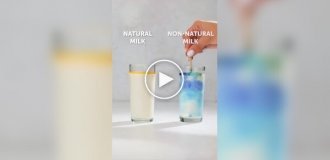Why are cells painted pink in European prisons? (4 photos)
In 1979, an interesting experiment was conducted in Switzerland. IN in some prisons they painted the cells in different colors, settled there prisoners, and began to observe. 
Pink prison in Switzerland
The conclusions were very unexpected. Prisoners in blue cells They demanded an extra blanket. It seemed to them that the cell was too cold, although the temperature did not change.
In the orange cells, on the contrary, the prisoners slept without a blanket. They were too hot.
In cells with yellow walls, prisoners read more, played chess and were generally interested in learning. In chambers with green walls, the prisoners behaved more calmly than usual. 
Pink camera example
But the most unexpected effect was given by the pink cameras. Pink color significantly reduced the aggression of the prisoners. Repeated Checks confirmed the effect - even the most aggressive prisoners quickly woke up in a pink cell.
Since then, every Swiss prison has several cells, fully dyed pink. The most violent are placed there. prisoners.
Similar studies were carried out in the USA. named scientist Alexander Schauss experimentally established a shade of pink color that maximally soothes the nervous and cardiovascular systems. This shade is called P-618 or Drunk-Tank Pink. Here he is in the photo below. 
P-618 or Drunk-Tank Pink
For reference. Drunk-Tank Pink is a bright pink color which was used in the Schauss experiments to study its effect on people's behavior. It turned out that this color can cause people sense of calm and reduce aggressive behavior. This color was so named because it was used to paint cameras for detention of drunk people in police stations. 
Two U.S. prison guards named Baker and Miller took the Schauss study, and painted P-618 several prison cameras. The experiment lasted 156 days. In the report, Baker and Miller pointed out that during these 156 days, “not a single case of uncontrolled or hostile behavior on the part of the newly arrested. Only 15 minutes being in the pink cell was enough to reduce the likelihood aggressive behavior, and the effect itself persisted in prisoners for half an hour after leaving it.”
Schauss' research is also used in professional sports. Some of the away locker rooms of American football teams are specially painted pink to reduce the opponent's motivation to win.
By the way, the P-618 shade has since been called the “Baker-Miller shade”.























